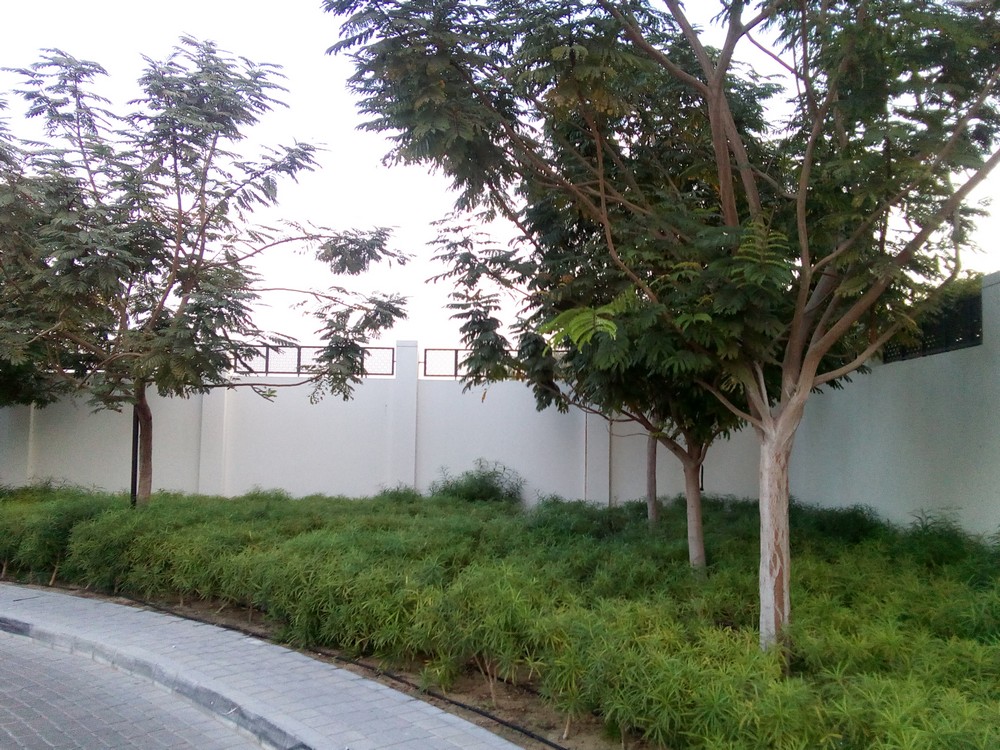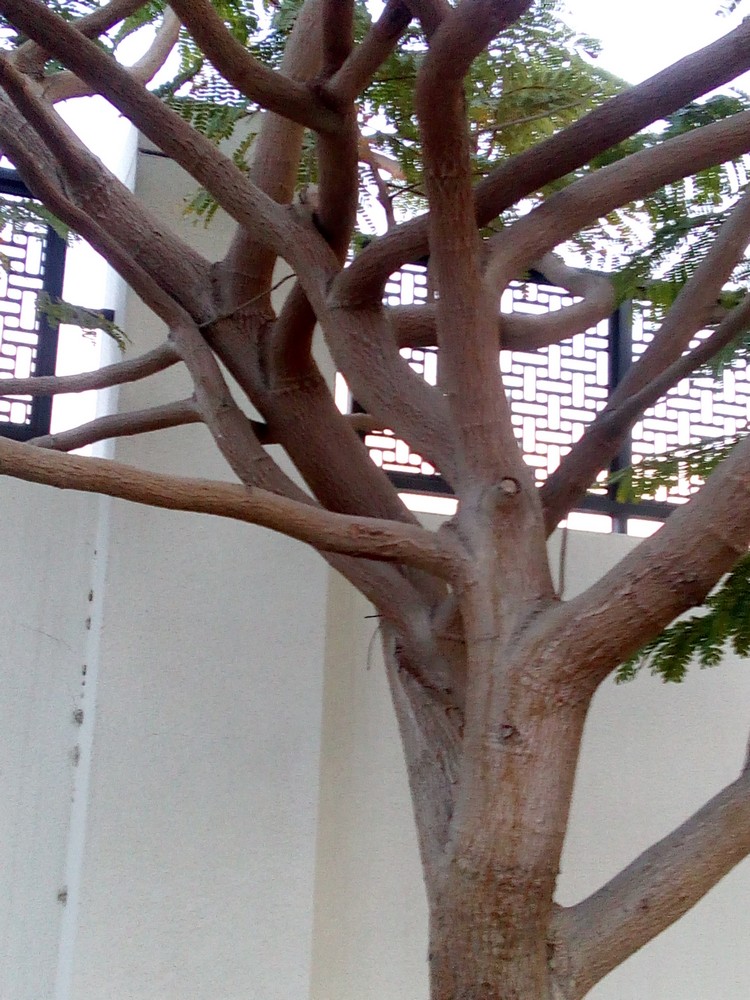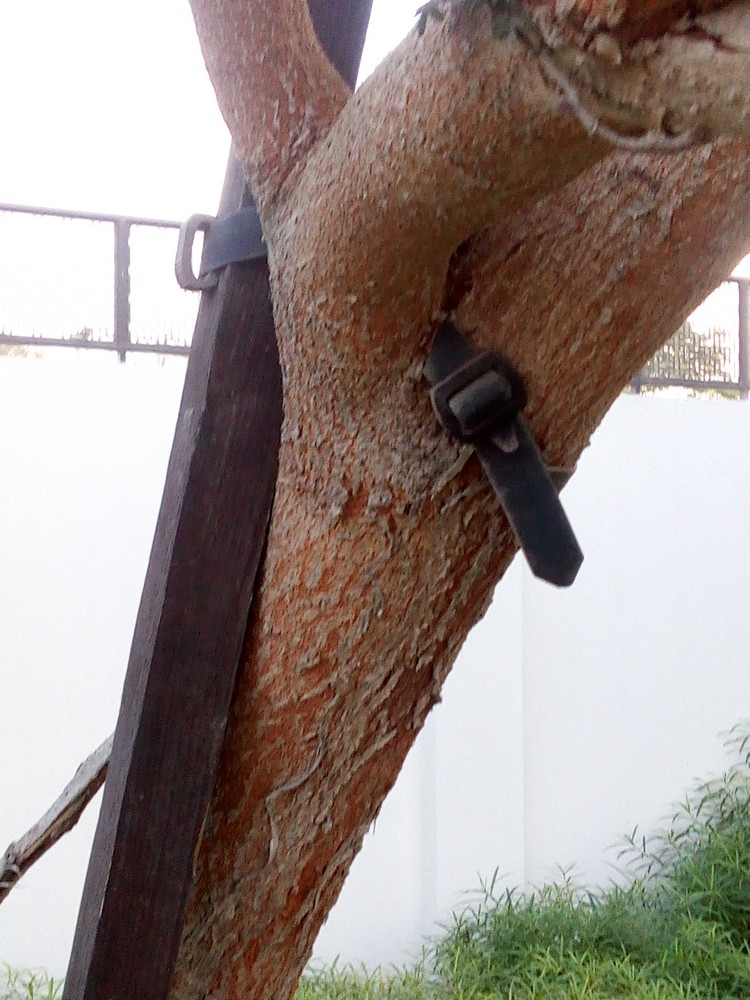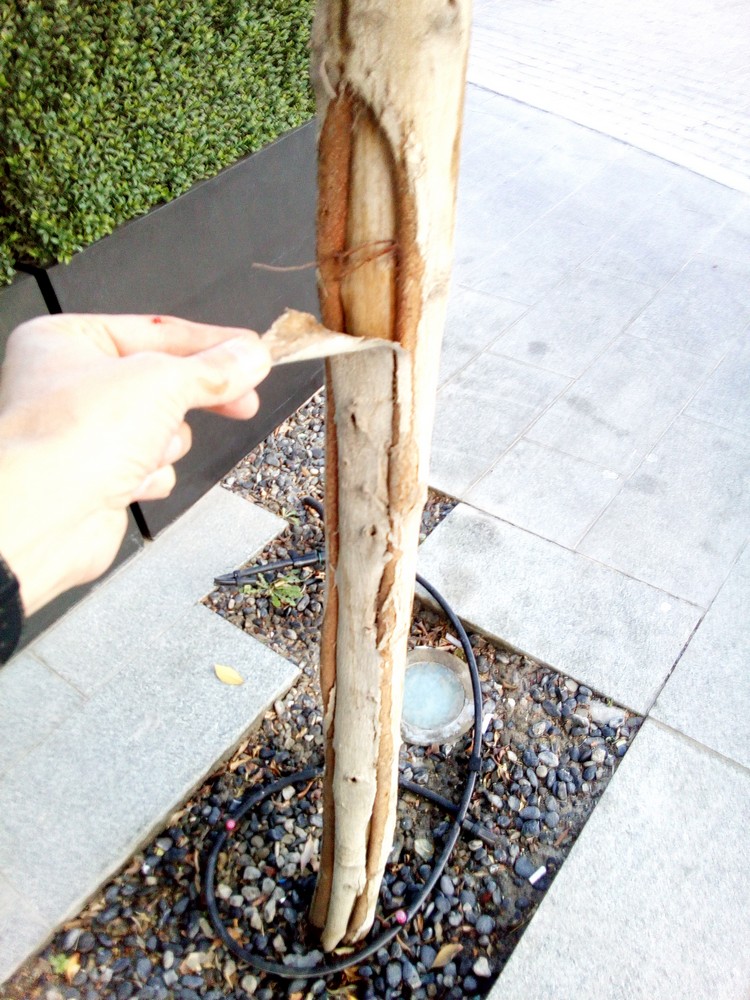On my most recent trip to Dubai, I enjoyed walking through some of the new landscapes that emerge as projects are completed. The UAE, along with most regions of the Middle-east has a rather limited palette of plants to work with (although that is growing as new plants are tried). What struck me, however, was how poor the quality of nursery stock was in some cases and what problems are being created for later, especially with regards trees.
This is not new, nor confined to this part of the world but it bothers me that new areas of urban green are sometimes given a poor start with sub-standard nursery stock, often flown in from other parts of the world.
Simple pruning at an early stage would have improved this tree’s framework, removing crossing and rubbing branches.
Wandering around a residential area in Jumeirah, I came across some newly planted Delonix regia, one of my favourite exotic trees. At first glance it looked nice, a simple planting of trees and groundcover but on closer inspection I was somewhat dismayed at the condition of the them. The problems of poor framework were caused by their time in the nursery, not due to planting, although some of them could have been rectified by a vigilant planting crew.
This tree tie – complete with post – must have been like this from the nursery. The post did not reach the ground.
Many of the dozen or so trees had ties left on which the tree had grown around completely, making them impossible to remove. As the planting is only around two years old (by my estimation), these may have been on the trees from their time in the nursery. Possibly the planting was older and pre-dated the building they were attached to and the trees then grew around the ties after planting. Either way, it’s a strong indication of neglect or lack of care. In the picture below, all the bark ridge above the tie may indicate “included bark” – bark sandwiched against bark, preventing live tissue growth and a strong branch collar formation.
The tree tie is trapped with “included bark” at the branch collar, which indicates a potentially weak branch join.
Several problems are arising here: pre-planting care in the form of correct formative pruning (five minutes with a pair of secateurs) and Post-planting care in terms of releasing planting ties – if they were not simply left over from the nursery days. If there is no way to go back and release the ties, a bio-degradable tie should have been used.
Damage to the main trunk or structural framework of a tree might go unnoticed when the trees are small but cause major problems as the tree gets older and puts on size and weight. This can range from the cosmetic to the potentially dangerous in a large tree and at this stage the remedy is costly and the expertise hard to find.
As fast-growing cities like Dubai mature, the needs of landscape shift from creation (in a hurry) to maintenance (at a constant pace). Skills, awareness of the need for – and absence – of skills, will become more and more urgent. If Dubai wants to keep it’s beautiful, green mantle, then there is a whole new phase of arboricultural care awaiting to be discovered and initiated. I have carried out trees assesments and given basic training of correct pruning methods in the UAE, but that has hardly scratched the surface; there is a lot more to be done.
Trees are the urban, biophilic, blanket that clothe and surround the concrete mountains we build. Trees make hot places not just bearable, but unbelievably beautiful. Trees absorb dust, cool the air, add moisture and oxygen and enrich our Souls. We need to honour and look after them, so that they can look after us.





No responses yet